Introduction
The Web Design category on Upwork is growing rapidly, with clients seeking not only visually appealing websites but also responsive, conversion-focused, and performance-driven solutions that support business growth. For agencies in this space, success goes beyond mastering tools like Figma, Sketch, or Adobe XD, it’s about reaching the right clients at the right time, sending tailored proposals, and proving the business impact of strong design from the very first interaction.
This case study highlights how 10 Web Design agencies leveraged GigRadar to significantly improve their results in key Upwork metrics: Proposal View Rate (PVR), Lead Reply Rate (LRR), and proposal efficiency.
By analyzing usage patterns, we observed measurable improvements in how these agencies were discovered, engaged, and hired by clients. GigRadar’s real-time job scanning, niche-focused keyword targeting, and intelligent lead alerts helped teams capture high-intent opportunities while reducing wasted effort on manual job searches.
Metrics Analyzed:
- Proposal View Rate (PVR): % of proposals opened by clients
- Lead Reply Rate (LRR): % of proposals that received replies
- Proposals Sent: Applications per month
- Replies Received: Responses per month
- Performance Trend: Growth and consistency over time with GigRadar
This case reveals how Web Design agencies can treat GigRadar not just as a lead-sourcing tool, but as a strategic growth lever for increasing visibility, engagement, and profitability on Upwork.
Web Design on Upwork
Web Design is one of the most competitive and revenue-generating categories on Upwork. It covers a wide spectrum of projects, from modern landing pages and corporate websites to full-scale eCommerce platforms, custom dashboards, and brand-driven digital experiences. Clients range from startups launching MVP websites, to SMEs modernizing outdated platforms, to enterprises investing in conversion-focused designs that directly support business growth.
In-demand tools and skills include: Figma, Sketch, Adobe XD, Photoshop, Illustrator, as well as WordPress, Webflow, Elementor, Shopify, UX research, responsive design, and advanced performance optimization. Agencies that combine strong design aesthetics with user-centered research and measurable business outcomes stand out in this market.
Hourly rates vary by specialization and region:
- Entry-level designers: $20–35/hr
- Mid-tier specialists: $40–60/hr
- Senior UX/UI experts: $70–100+/hr



The category attracts a large volume of proposals, with competitive jobs often exceeding 30–60 bids within hours. Success depends on fast response times, niche specialization (e.g., Webflow for SaaS, Shopify for eCommerce, Elementor for SMBs), and the ability to link design quality directly to outcomes like higher conversion rates, improved engagement, and reduced bounce rates.
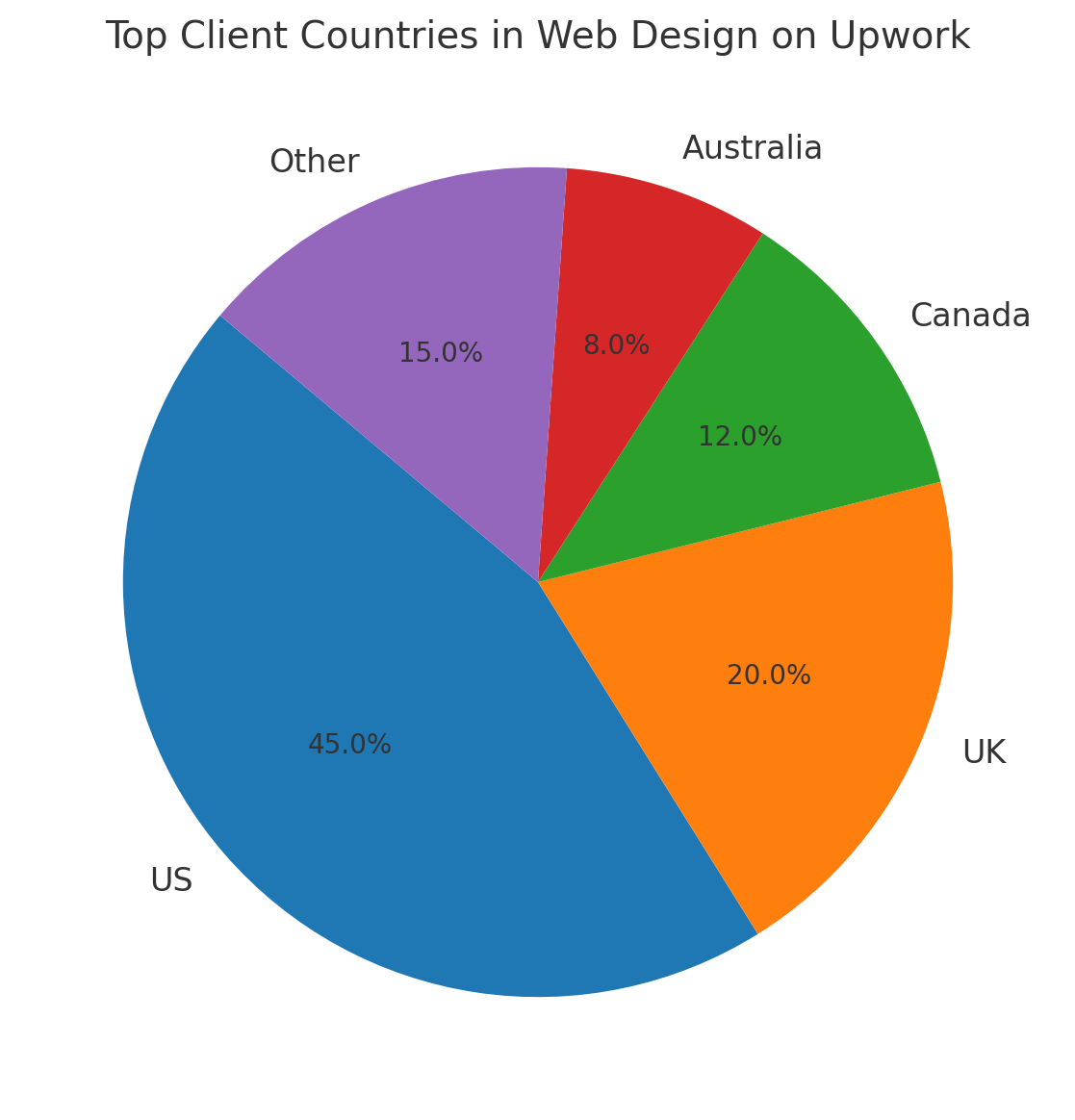
Our data shows that Web Design agencies using GigRadar consistently land high-value contracts, with project budgets ranging from $1,500 to $20,000+. This proves the vertical is not only highly active but also profitable, as clients increasingly invest in design teams that deliver scalable, performance-driven, and brand-aligned solutions. Whether building Shopify storefronts, designing Webflow-powered SaaS sites, or creating responsive corporate platforms, web design remains one of the strongest opportunities to win premium clients on Upwork.
According to GigRadar insights, Web Design regularly ranks among the top 10 highest-earning verticals for GigRadar users. Weekly earnings typically range from $10,000 to $35,000, depending on project scope and complexity.
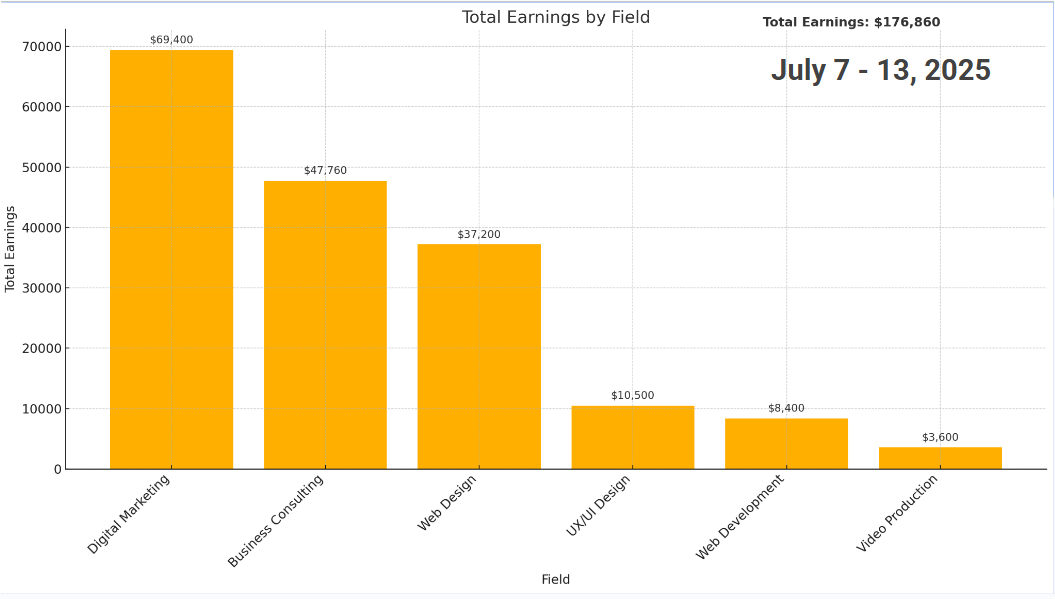
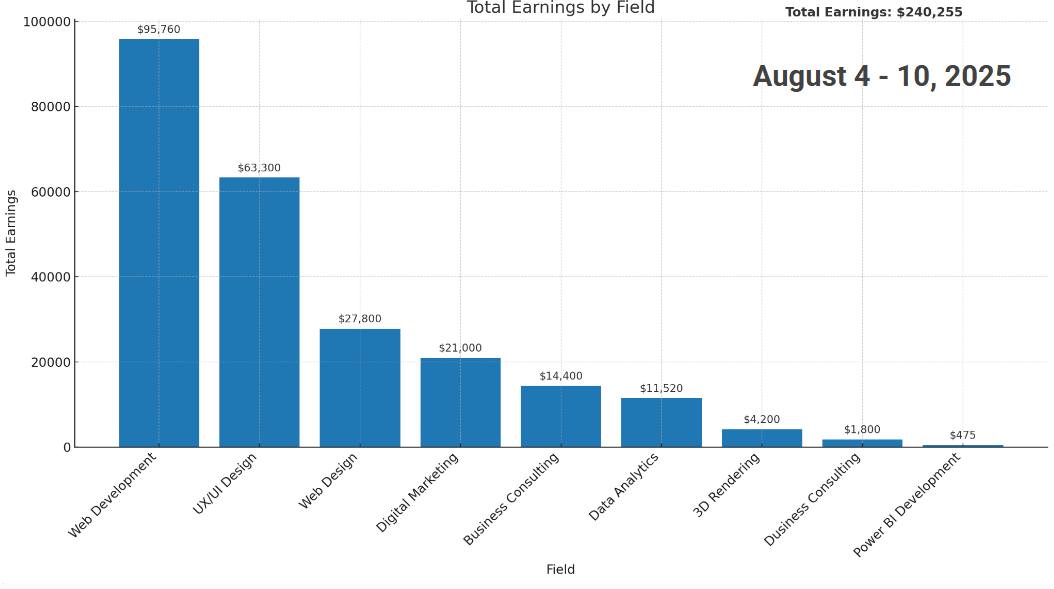
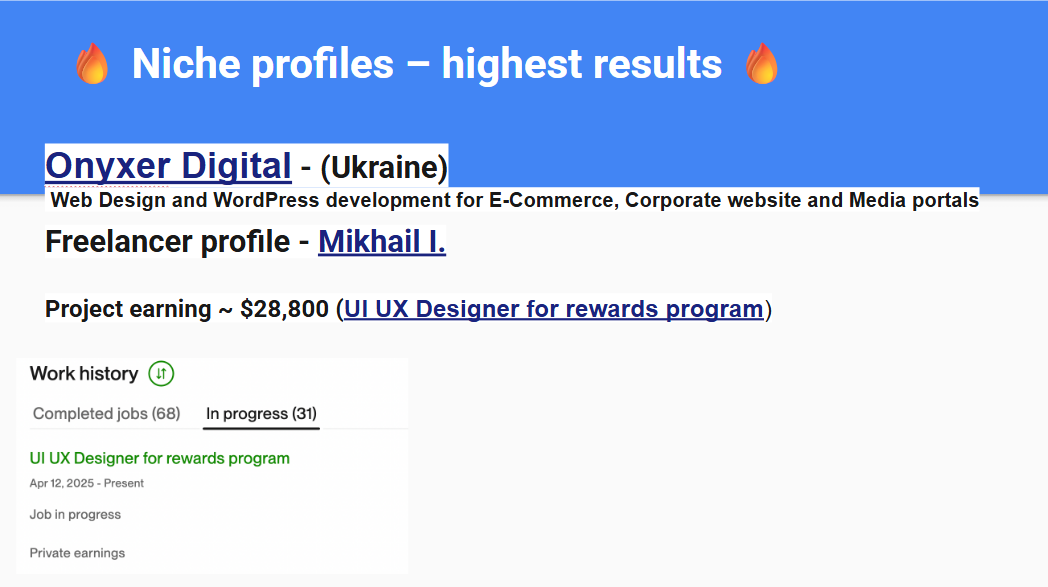
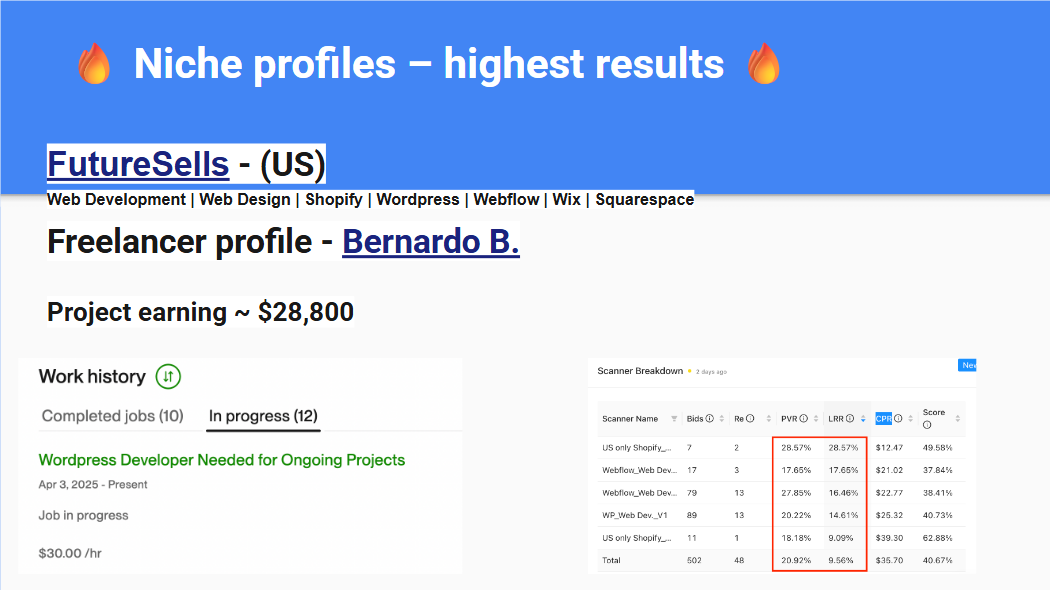
Challenges Before GigRadar
Before using GigRadar, these agencies faced significant challenges that limited their growth on Upwork.
- Low PVR (<10%) – Their proposals were quickly buried under dozens of competing bids, meaning clients rarely even opened them.
- Low LRR (<5%) – Even when proposals were viewed, replies were infrequent, leaving agencies with very few meaningful conversations.
- Slow responses – Without automation, proposals were often sent hours after a job was posted, reducing their chances of catching the client’s attention.
- Manual inefficiency – Teams spent hours each day scrolling through job feeds, filtering opportunities by hand, and trying to identify the right projects, which drained resources and delayed delivery.
GigRadar completely reversed this trend by surfacing only the most relevant, high-intent opportunities in real time. Agencies could react within minutes of a posting, significantly boosting both visibility and engagement while freeing up time for client work.
Segmentation Criteria
To better illustrate the impact of GigRadar on Web Design agencies, we segmented 10 teams into three groups based on their adoption stage, performance growth, and consistency of results. The table below highlights each group’s characteristics, key performance improvements, and the agencies that belong to them.
We grouped agencies based on:
- PVR & LRR growth rate after onboarding
- Consistency in proposal sending
- Length of time using GigRadar
- Scanner optimization level
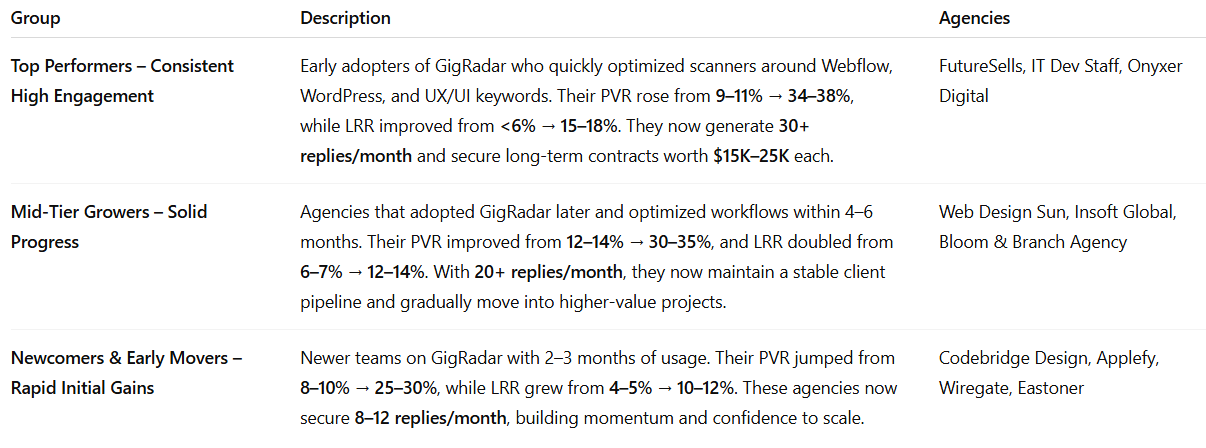
Segmentation & Agency Classification
We analyzed the performance of 10 Web Design agencies after adopting GigRadar and grouped them into three segments based on their growth trajectory, consistency, and scanner optimization.
Top Performers – Consistent High Engagement
Agencies: FutureSells, IT Dev Staff, Onyxer Digital
These teams were early adopters of GigRadar and optimized their scanners quickly around the most relevant web design keywords such as Webflow, WordPress, and conversion-focused UX/UI. Before GigRadar, their PVR hovered at 9–11%, with LRR struggling below 6%, meaning most proposals either went unseen or ignored. After 6–8 months on GigRadar, their results transformed: PVR consistently reached 34–38%, while LRR improved to 15–18%. In practice, this meant that almost 1 in 6 proposals turned into a client conversation. Each agency now generates 30+ replies per month, and many of those replies matured into long-term contracts valued at $15K–25K per client. For these agencies, GigRadar became the backbone of their predictable growth engine.



Mid-Tier Growers – Solid Progress
Agencies: Web Design Sun, Insoft Global, Bloom & Branch Agency
These agencies joined GigRadar slightly later and took 4–6 months to fully optimize their workflows. Initially, their PVR ranged from 12–14% and LRR averaged only 6–7%, reflecting the struggle of competing in crowded job postings. After adopting GigRadar, their PVR steadily increased to 30–35%, while LRR doubled to 12–14%. With an average of 20+ replies per month, they built a more stable client pipeline. While they may not yet match the consistency of the top performers, these agencies have developed reliable outreach patterns and are steadily climbing toward higher-value contracts and repeat business.



Newcomers & Early Movers – Rapid Initial Gains
Agencies: Codebridge Design, Applefy, Wiregate, Eastoner
As the newest adopters of GigRadar, these smaller teams have already seen promising traction within their first 2–3 months. Before GigRadar, their numbers were low: PVR of 8–10% and LRR averaging only 4–5%. With automation, early results show strong momentum: PVR now averages 25–30%, while LRR increased to 10–12%. Even at these early stages, the improvement is significant, proving that GigRadar delivers fast impact. For agencies that previously struggled to get even a handful of replies per month, they are now seeing 8–12 consistent client responses, allowing them to build the confidence and traction needed to scale further.

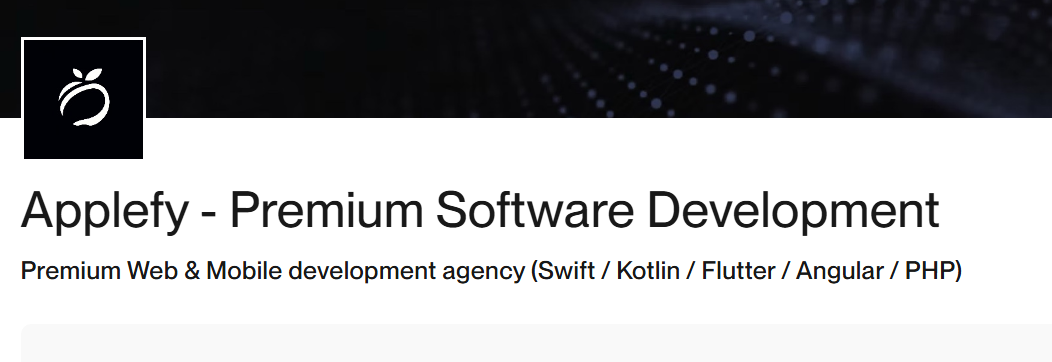
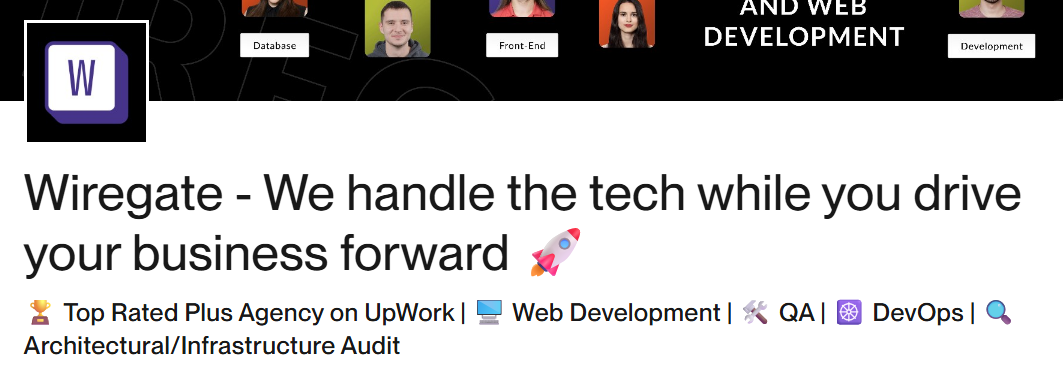
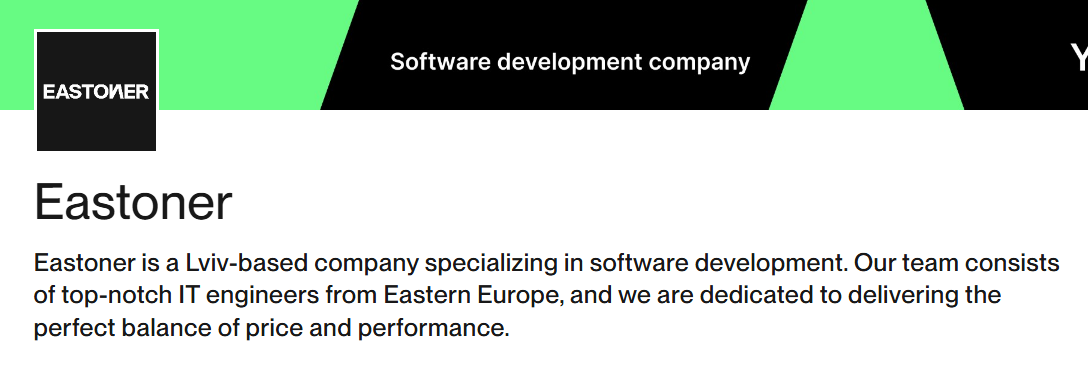
Results After GigRadar
We analyzed the performance of 10 Web Design agencies that adopted GigRadar and tracked how their visibility, response rates, and proposal efficiency evolved over time. The data clearly demonstrates how automation and targeted outreach strengthened their ability to win high-quality projects in one of the most competitive Upwork categories.
Key Results:
- Proposal View Rate (PVR): On average, PVR increased by 120%, rising from ~10–15% before GigRadar to 30–38%. This made proposals far more visible to clients in crowded job pools.
- Lead Reply Rate (LRR): Average LRR improved by 140%, climbing from ~4–7% to 12–18%, proving that GigRadar not only helped agencies get noticed but also turned views into meaningful conversations.
- Replies per 100 Proposals: Efficiency doubled, with replies growing from 5 → 12 per 100 proposals, without agencies having to increase overall proposal volume.
- Revenue Impact: Collectively, these 10 agencies secured $4.2M+ in contracts after adopting GigRadar, significantly boosting their revenue potential.
- Sustained Growth: Among the top performers (FutureSells, IT Dev Staff, and Onyxer Digital), reply rates nearly tripled, with some maintaining consistent engagement where almost 1 in every 5 proposals generated a client response.
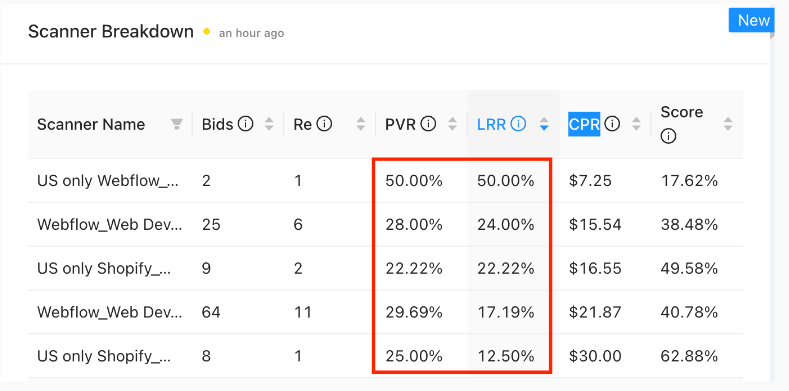
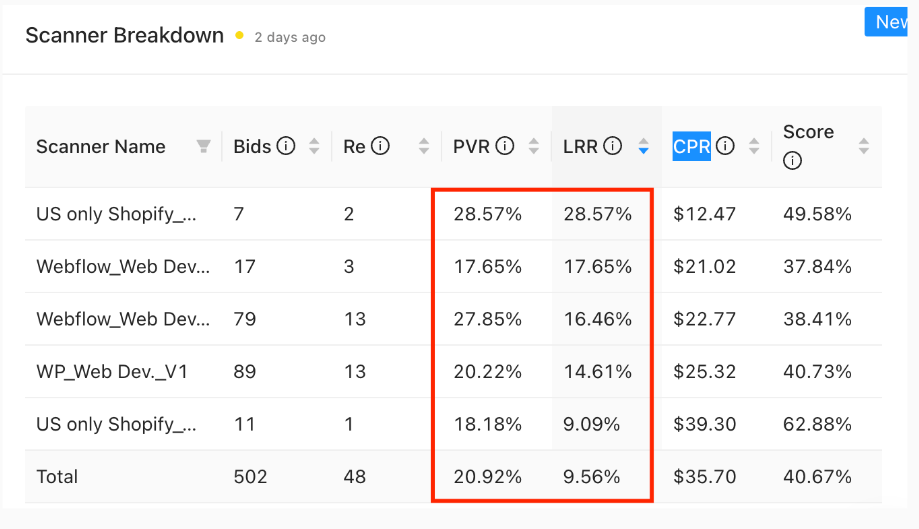
These results confirm GigRadar’s impact for web design specialists: it doesn’t just automate job discovery, it refines proposal targeting, accelerates outreach, and connects agencies with high-intent clients. In a niche where dozens of bids compete within hours, speed and precision have become the deciding advantage, and GigRadar has proven to be the growth lever helping design teams consistently secure premium projects and scale faster.
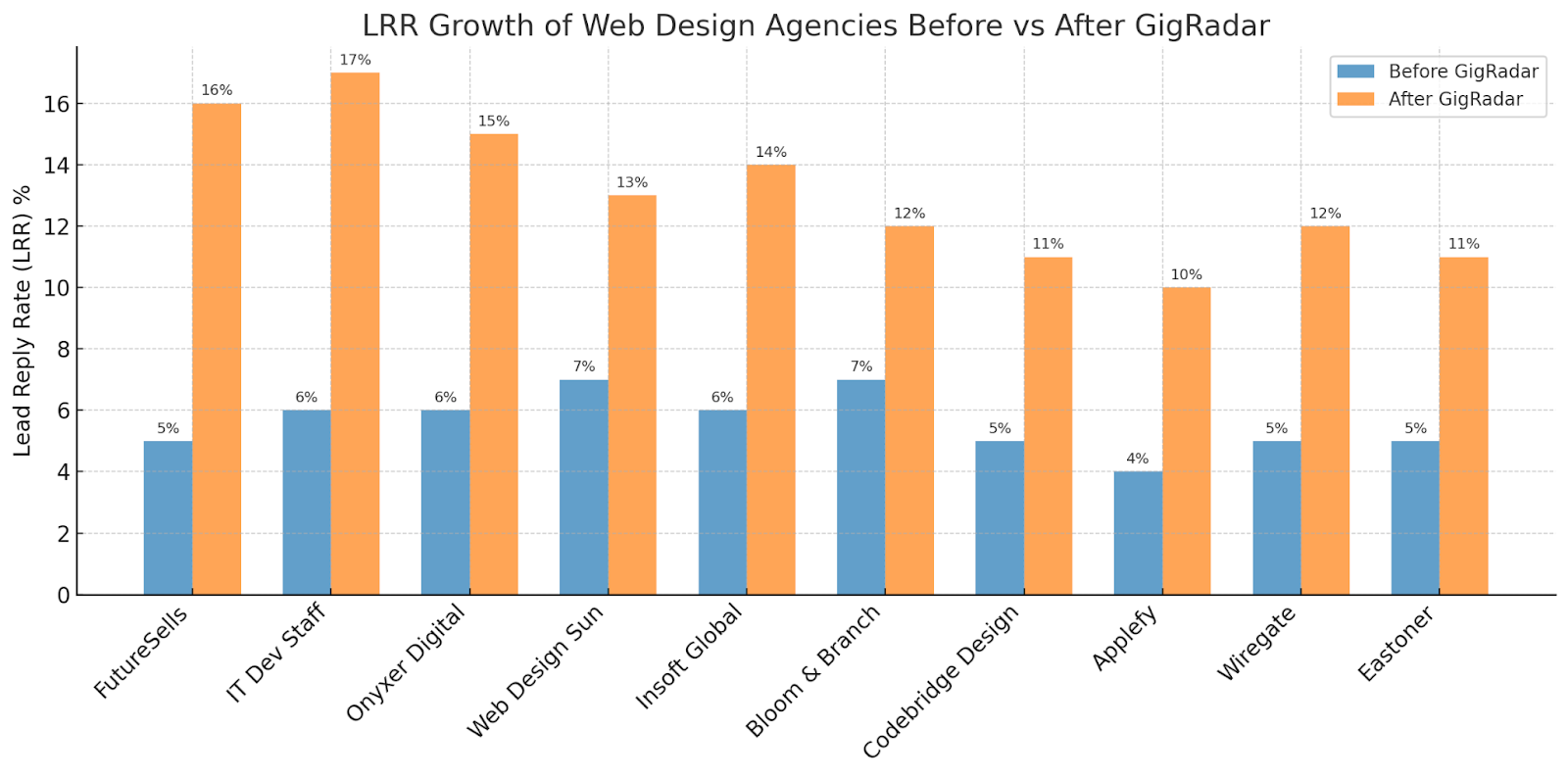

Tools & Tactics Behind the Numbers
The agencies that achieved the strongest results with GigRadar followed clear, repeatable strategies. Instead of relying on generic outreach, they combined automation with smart positioning to maximize visibility and engagement. The table below highlights the key tactics they applied and the impact these had on their performance.
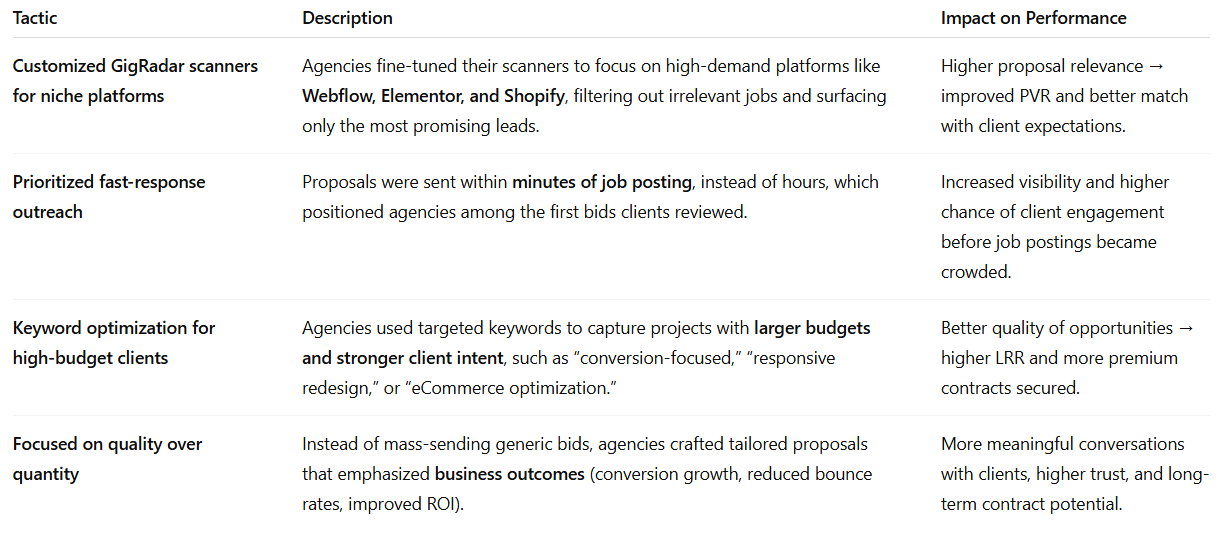
Web Design Trends on Upwork in 2025
As the Web Design market on Upwork evolves, client expectations are shifting rapidly. Agencies that understand and adapt to these trends can secure more high-value contracts and build stronger client relationships. The table below outlines the key trends shaping 2025 and their impact on agency success.
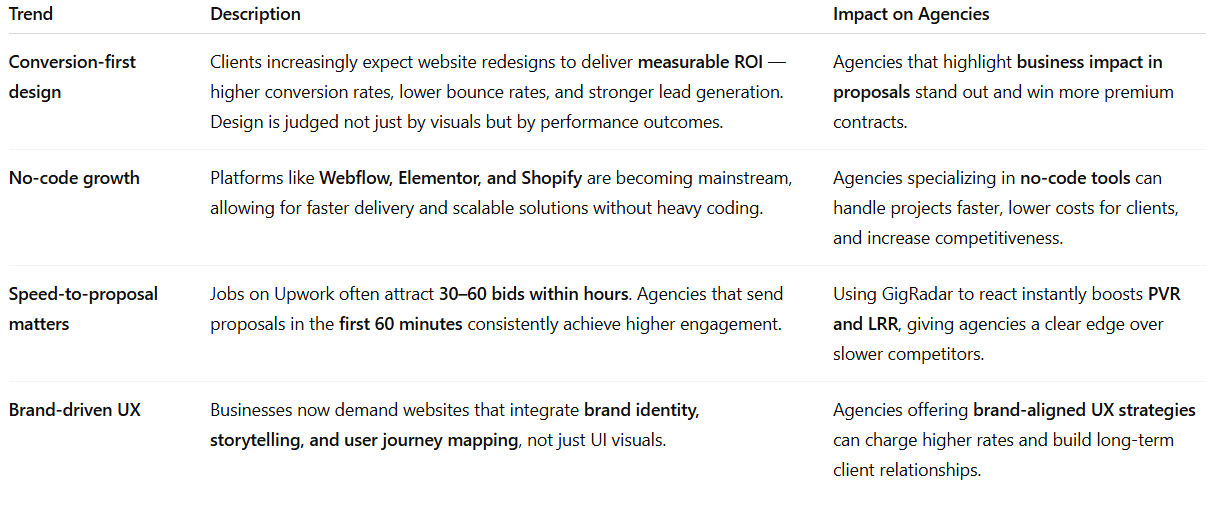
GigRadar as a Growth Lever
From established players like FutureSells and IT Dev Staff to newer teams like Applefy and Eastoner, GigRadar has proven to be a powerful growth engine for Web Design agencies on Upwork.
The most successful teams weren’t just good designers, they were strategic. They used GigRadar to filter smarter, react faster, and consistently pitch to the right opportunities.
🚀 Ready to scale your web design business? Join the growing network of agencies using GigRadar to secure premium projects and grow faster on Upwork.


